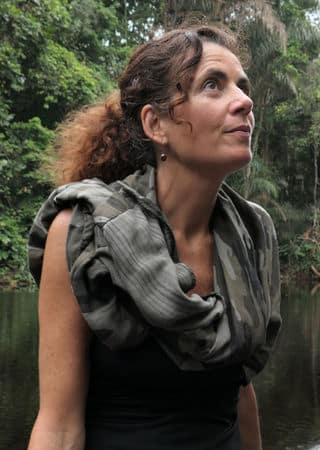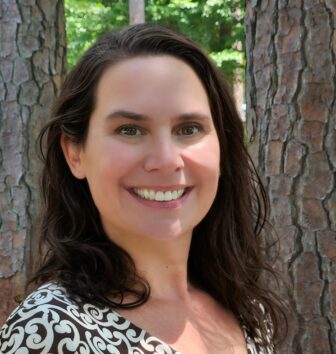‘I don’t know how it was possible to do the thing we were doing.’
Congolese poachers slaughter bonobos and sell them to be eaten. In their bloody wake, they leave behind helpless infants, too small to eat, but very valuable in the international black market in endangered species. Some of those bonobo babies are rescued before they can be smuggled out of the Democratic Republic of Congo; they go to Lola ya Bonobo Sanctuary for rehabilitation and eventual return to the wild. But what about the poachers? Can they be rehabilitated, too?
A bold initiative at the Les Amis des Bonobos du Congo (Friends of Bonobos) community reserve suggests that hunters who once ruthlessly killed bonobos and other forest dwellers can be reformed into some of wildlife’s most skilled guardians.
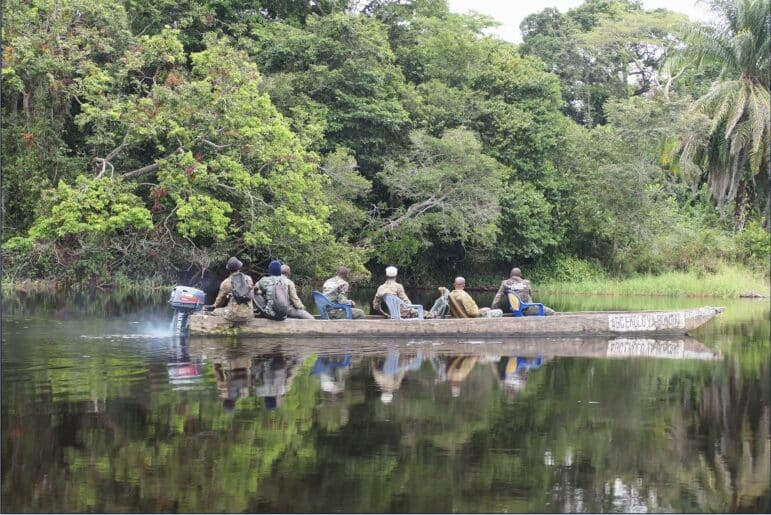
Fanny Minesi, General Director of Les Amis des Bonobos du Congo (ABC), says four former hunters are now working full-time as forest guards at Ekolo ya Bonobo Community Reserve in Equateur Province. This happened as a natural development of the need to monitor how bonobos from Lola fare after they are released into the reserve which first occurred in 2009.
Minesi says today it’s obvious the re-wilded bonobos, who now number about 35, are thriving. But Ekolo is the first (and remains the only) place in the world where such releases have occurred, and skepticism that the bonobos could make the transition initially was intense. To monitor the first group, ABC hired community members who were accomplished trackers but only hunted occasionally to feed their families. “They might kill an antelope now and then, but they weren’t involved in commercial hunting,” Minesi says. “Commercial hunters kill to fill a boat.”
Minesi says her interest soon expanded to documenting “that bonobos as an umbrella species have an impact on biodiversity.” Modern tools for biomonitoring had become available, and Minesi and her colleagues began hiring young men who were literate and comfortable using electronic devices. But as they began working, “the amount of data they were collecting plummeted!”
Finding good trackers
“They weren’t good trackers,” she explains. Following animals in Ekolo’s forests “is not like tracking an antelope in the middle of Kenya, where you see the footprint of the animal in the sand.” In Ekolo’s mega-peatland, choked with vegetation and often flooded, “You’re seeing the footprints on leaves!”
She laughs, remembering being out with two forest guards who were arguing over when an antelope had passed through. One insisted it was 8 hours earlier, while the other thought it was the previous day. “And I was like: ‘What are they looking at?’ But those guys grew up in this environment. This is their expertise.”
Minesi thus began creating teams that paired men who were literate and tech-savvy with those who were expert trackers. “And who can track better than hunters?” she asks.
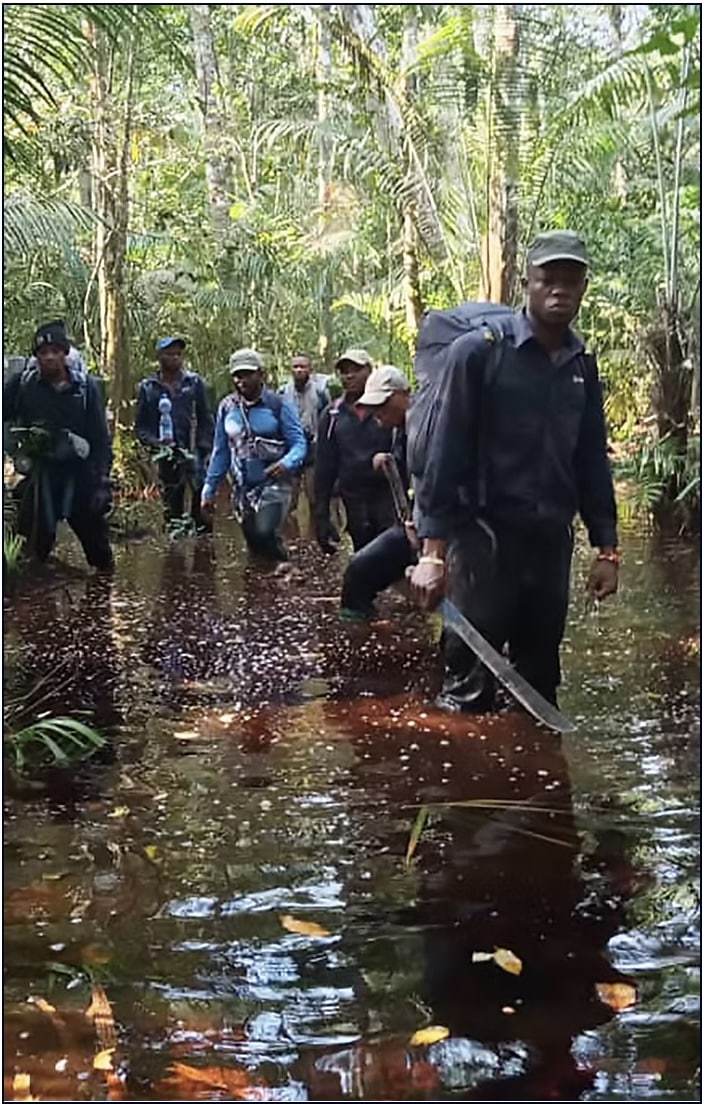
Two forest guards were arguing over when an antelope had passed through. One insisted it was 8 hours earlier, while the other thought it was the previous day. “And I was like: ‘What are they looking at?’
Minesi’s understanding of the poachers’ motivation deepened over time. Poverty drives them to the work, she declares. The hunters see poaching as one of their few, if only, options for earning any cash. Hiring them to work as forest guards could benefit bonobos and humans, most notably the former poachers themselves.
Hunters struggle to get by
Poaching is hardly a get-rich-quick scheme for the hunters. Every year more than 5 million tons of bushmeat are extracted from the Congo Basin. But between the forest and the mostly urban diners who crave such meat stretches a complex web of middlemen. One authority recently found that a whole smoked monkey, which in 2020 fetched a price of 10,000 Congolese francs (about $5) in Mbandaka (the large town nearest to Ekolo), sold for 35,000 francs (about $17.50) in Kinshasa — reflecting 250% in markups. Hunters have told Minesi they can make only about $7 for a dead adult bonobo. “It’s heartbreaking,” she says.
One of the former hunters, Faustin Iselo, says despite killing a large number of animals he was unable to get by and feed his family. “I was really starving and finding food was difficult.” After starting to work for ABC, “My financial situation improved significantly,” he says.
ABC pays all its employees at least $300 a month — plus health care for their entire family. “Sometimes people want to work for us just to get the access to the health care,” Minesi says. The income is steady and they are not plagued by the hazards of hunting.
Minesi says when she brought up the idea of hiring hunters to serve as forest guards, some community members expressed concern. “They were worried. They said, ‘Are we letting the wolves inside our farm?’ ” But the fears disappeared as the former hunters began to shine in their new roles.
Another former hunter, Jean-Louis, attests that hunting had many drawbacks. “After killing an animal, bringing it home was a challenge because of its weight.” He says he sometimes had to leave the kill in the forest, then round up other men to help him carry it, then pay them for their assistance. “All the animals I killed through hunting did not allow me to make ends meet. I was always in debt.” Now, working for the reserve, Jean-Louis says he can finally pay to educate his eight children. “I want to tell my friends that the work of forest preservation is the right one and will sustain our lives.”
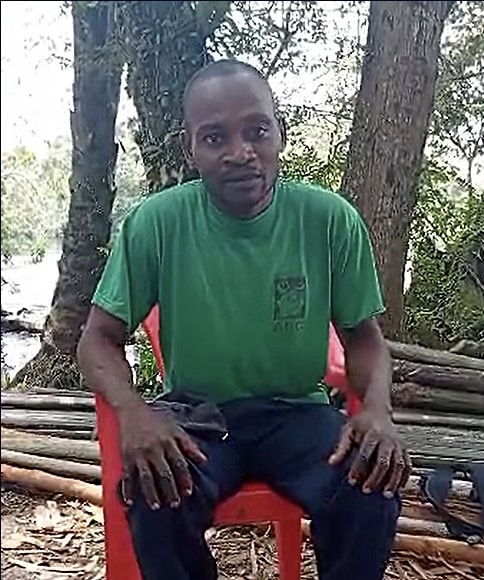
Antoine Limaya, also the father of eight, says during the years he worked as a poacher, “I was exposed to many dangers. My weapon could get damaged. I faced harsh weather conditions. A tree branch could fall on my head — all for amounts of money that didn’t even allow me to send my children to school.”
“Being constantly committed to animal preservation has removed any lingering desire for poaching that I once had. I began to feel a great deal of pity for [those who are still] killing animals,” he says.
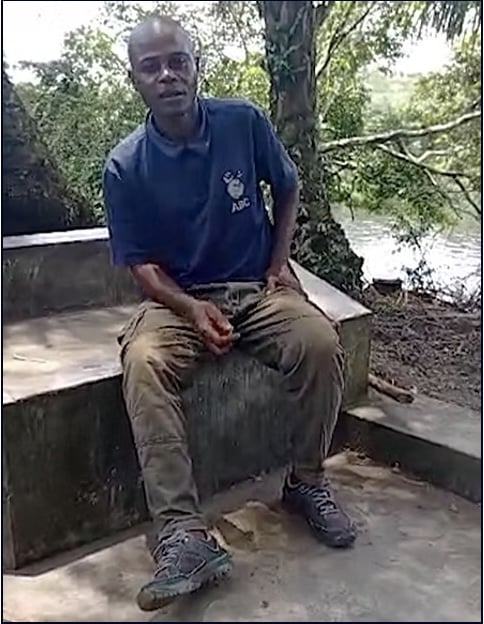
New Conservationists
Minesi says tapping into this expertise has helped the Ekolo team learn how to better protect all the animals in the reserve. The reformed poachers share insights into how hunters stalk and kill their prey. Working with the other forest guards, they patrol the forest and talk to local people they encounter about using harvesting techniques that don’t hurt the ecosystem. Remarkably, Minesi says on the rare occasion when they’ve encountered poachers with guns, they’ve managed to confiscate the weapons (even though Ekolo’s guards are for the most part unarmed).
She adds that the communities around Ekolo have increasingly been contributing to the surveillance efforts. “The last three arrests were not done by us! It was by the communities themselves.” Two of the transgressors were hunters, and the third was poisoning a pond as a means of catching fish. Local people organized to catch them, again without using any weapons.
“This is when I felt like, okay, it’s not our project anymore,” Minesi says with satisfaction. Even the local justice official expressed amazement. “He said, ‘I have to say I didn’t really trust this thing was working. But now I feel the young guys are starting to understand that what you are helping them do is to protect the resources for their future.’ ”
Minesi says, “Working with us, you learn about bonobos. And when you learn about something, you come to love it and you want to protect it.”
Iselo agrees: “I urge my former poacher colleagues to give up this work and join us in preserving nature, which is now our greatest heritage for the country. We were fortunate as children to grow up and see many kinds of animals. We must do our best to ensure that our children have the same opportunity.”
Jeannette De Wyze was a journalist at the San Diego Reader for 30 years. Today she’s a bonobo lover and supporter and the volunteer liaison between Women’s Empowerment International and the Nyaka Grannies Project in Uganda. She also raises puppies to be service dogs for Canine Companions for Independence and is an active travel blogger.
Notes:
- “Forest to Table,” National Geographic, June 2023, Issue 6, Volume 243, p. 86.
- Trefon T. Bushmeat, Culture, economy and conservation in Central Africa. Oxford University Press, 2023, p 122.
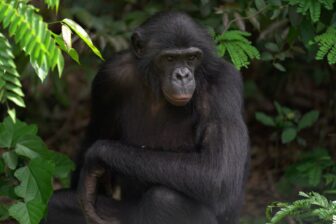 Kendra is a creative problem-solver who provides executive and operational support across the organization. As Executive Assistant to Ariel Rogers, she manages scheduling, communications, and day-to-day priorities while also supporting the development and communications teams with administrative and operational needs.
Kendra is a creative problem-solver who provides executive and operational support across the organization. As Executive Assistant to Ariel Rogers, she manages scheduling, communications, and day-to-day priorities while also supporting the development and communications teams with administrative and operational needs.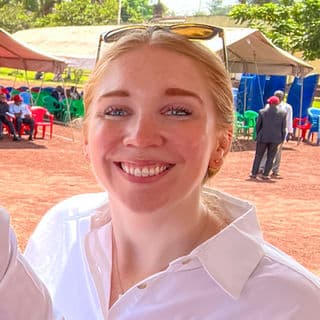 Kathleen Cook brings more than nine years of experience working across Africa, with a focus on the Democratic Republic of Congo, where she has traveled over twenty times to support projects spanning conservation, clean energy, and community development. Her career has centered around using storytelling, strategic marketing, and relationship-building to create meaningful impact.
Kathleen Cook brings more than nine years of experience working across Africa, with a focus on the Democratic Republic of Congo, where she has traveled over twenty times to support projects spanning conservation, clean energy, and community development. Her career has centered around using storytelling, strategic marketing, and relationship-building to create meaningful impact.